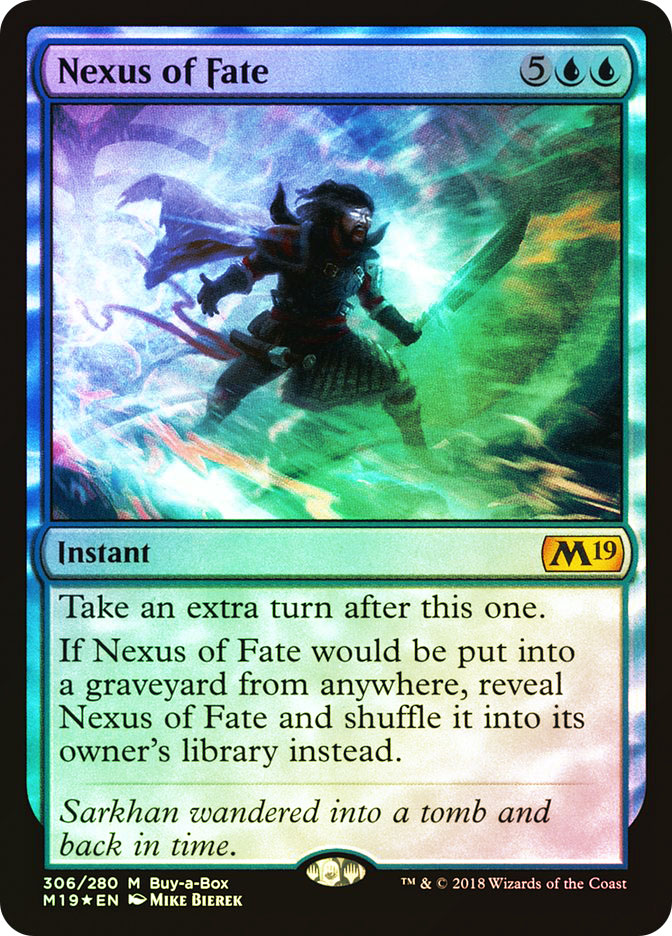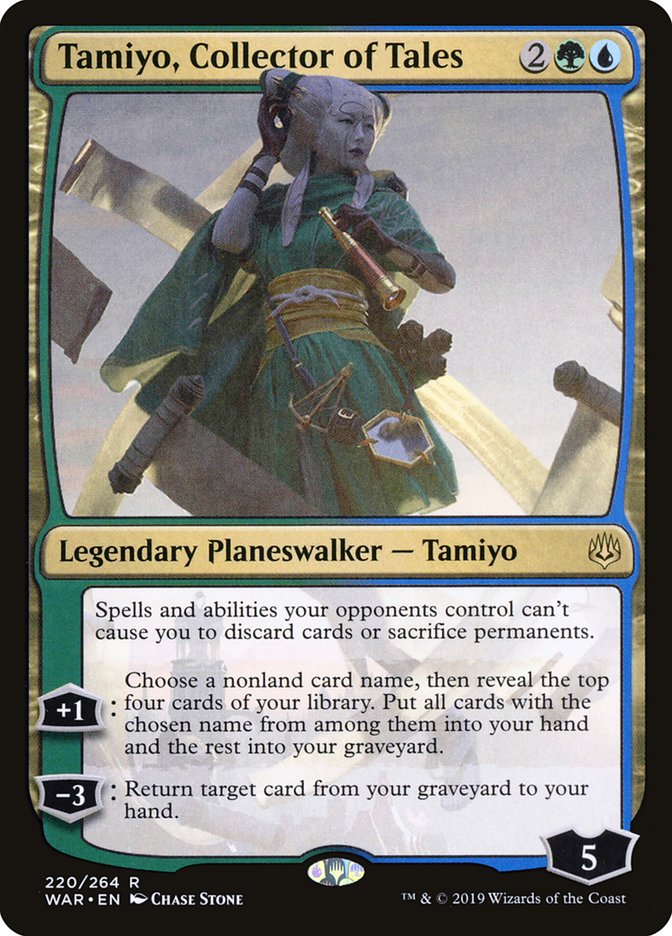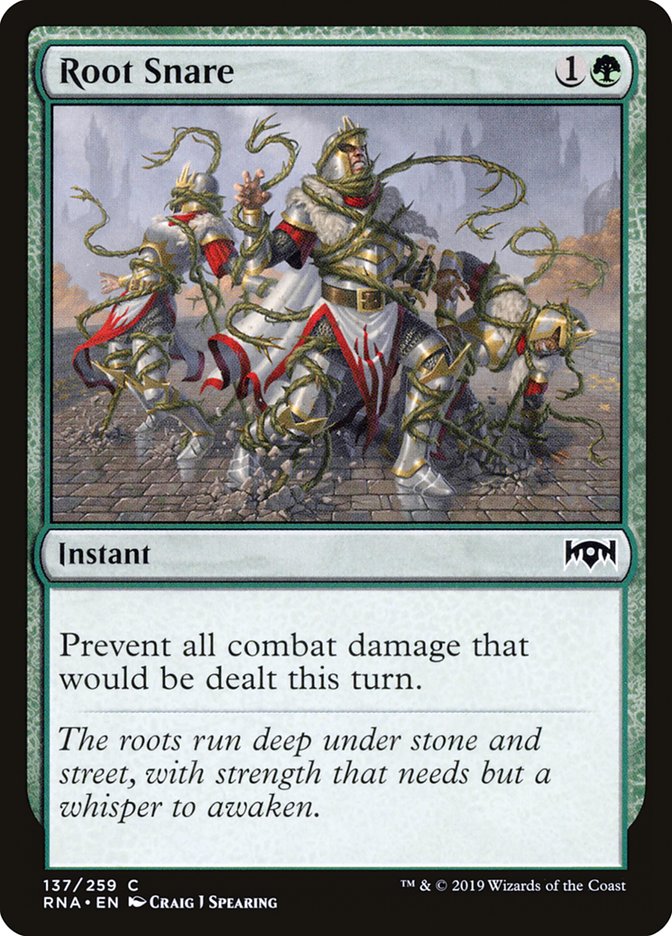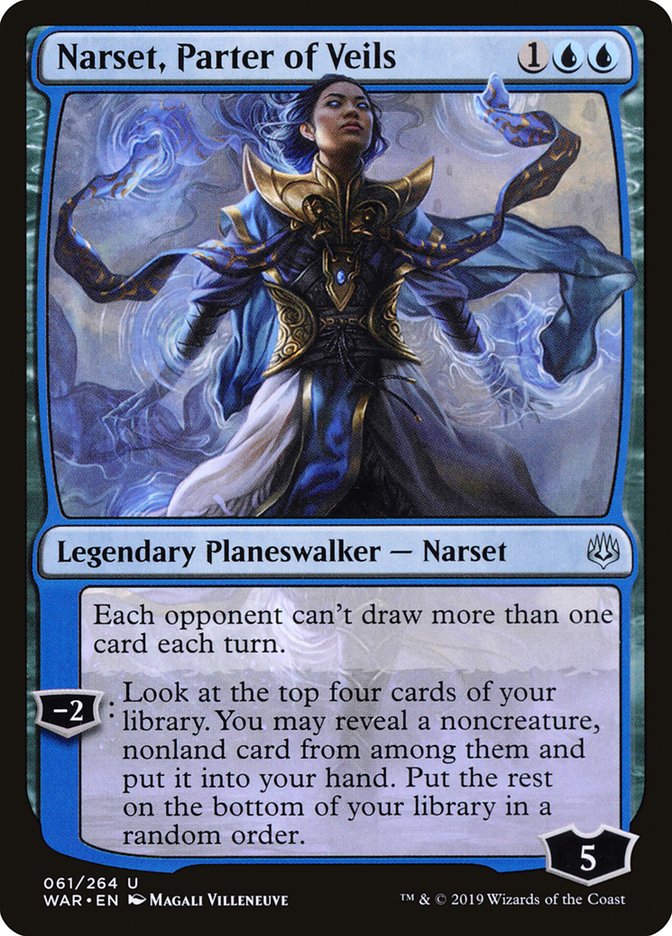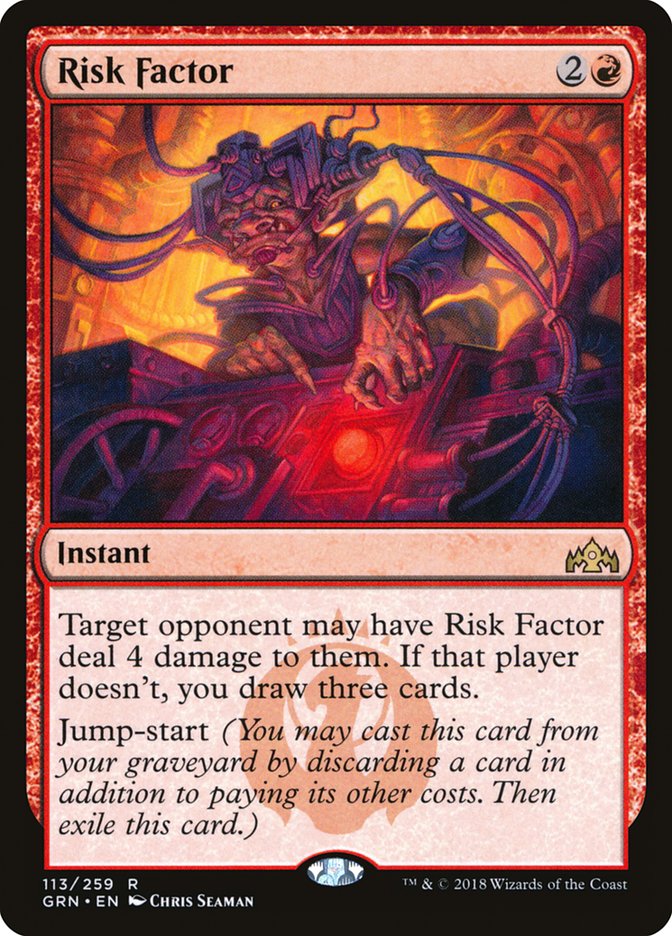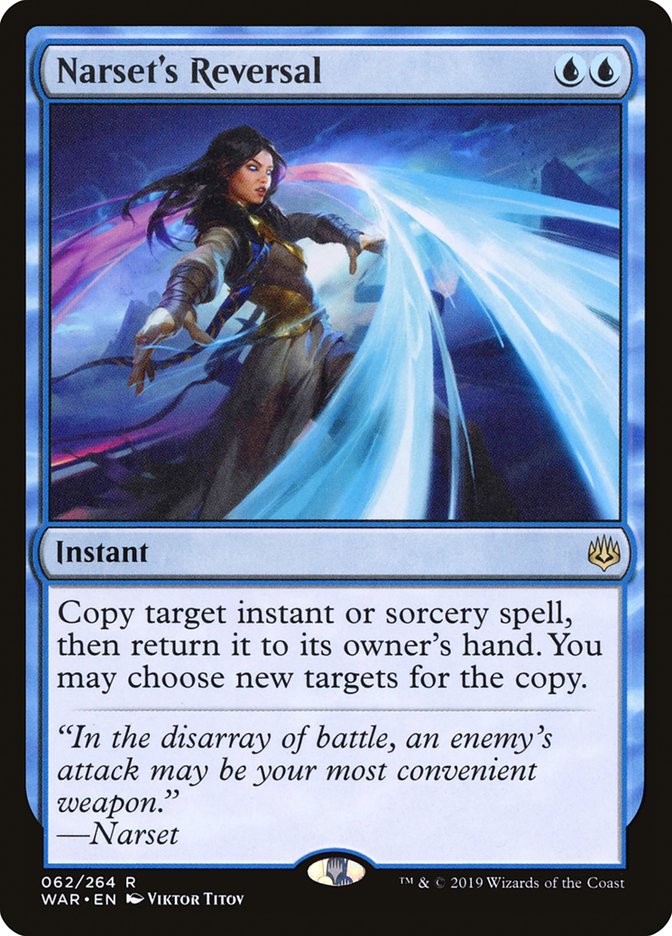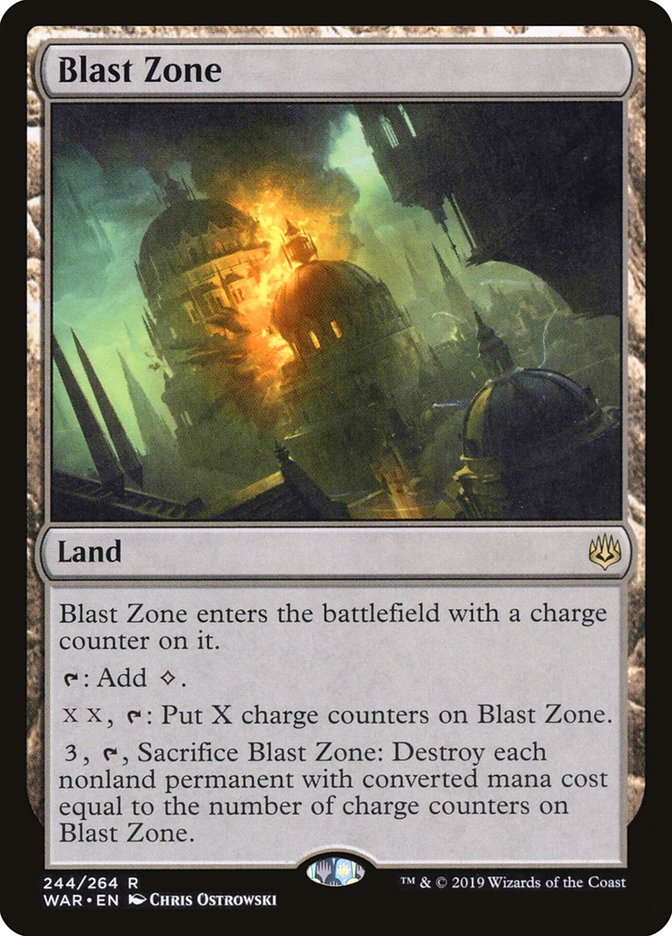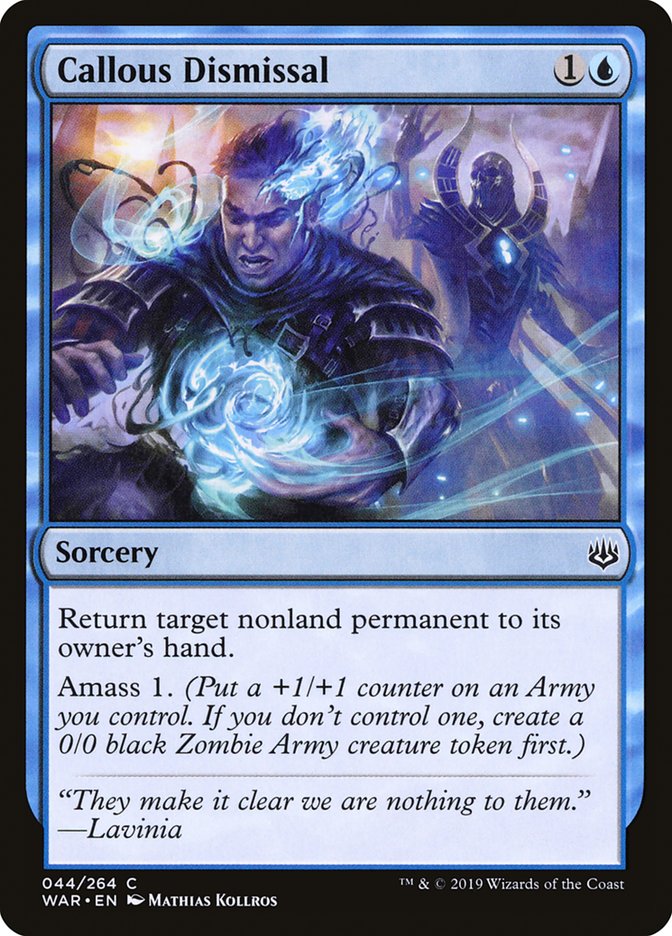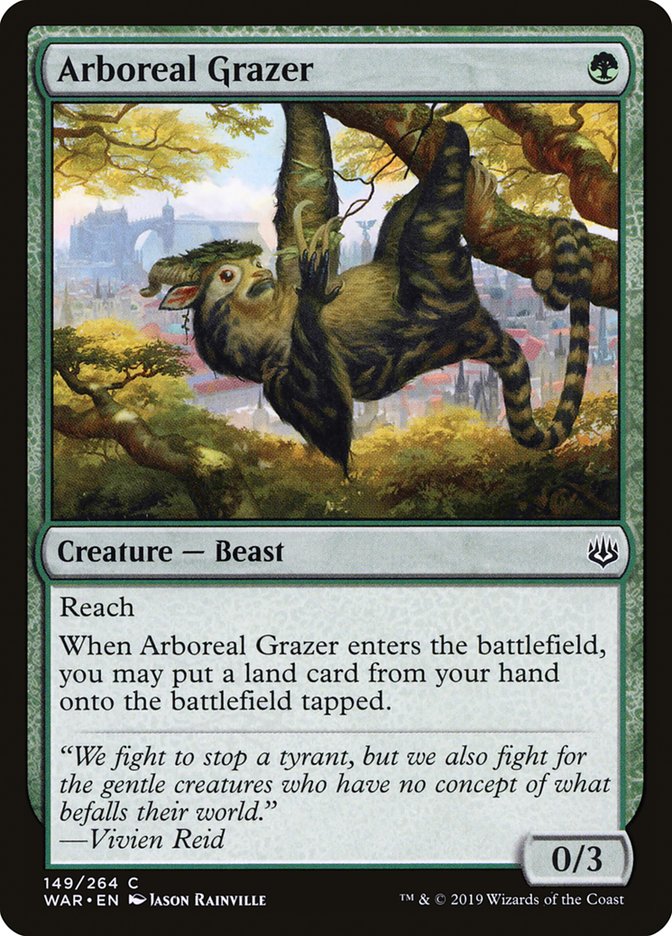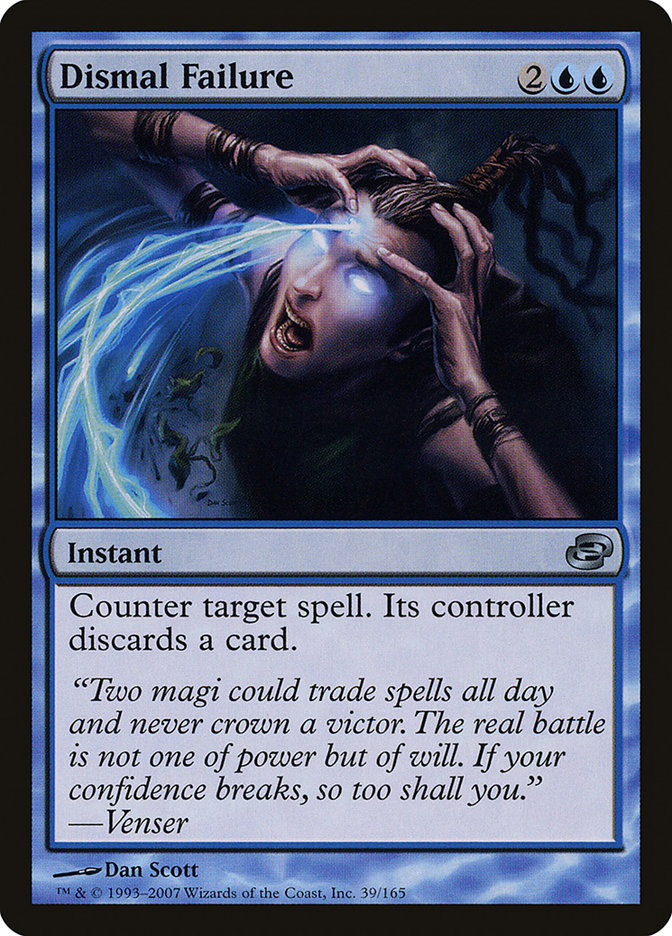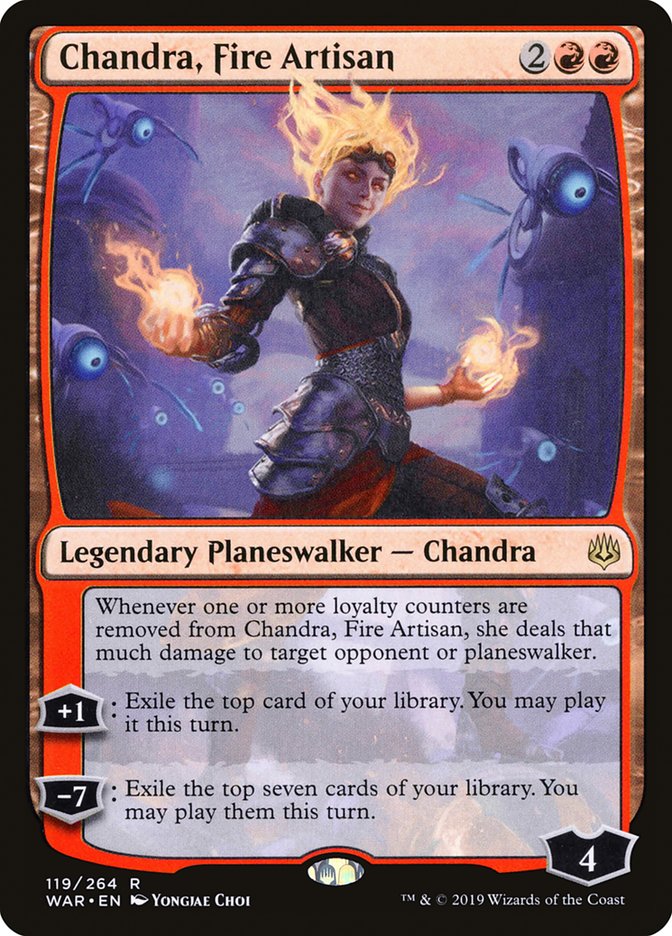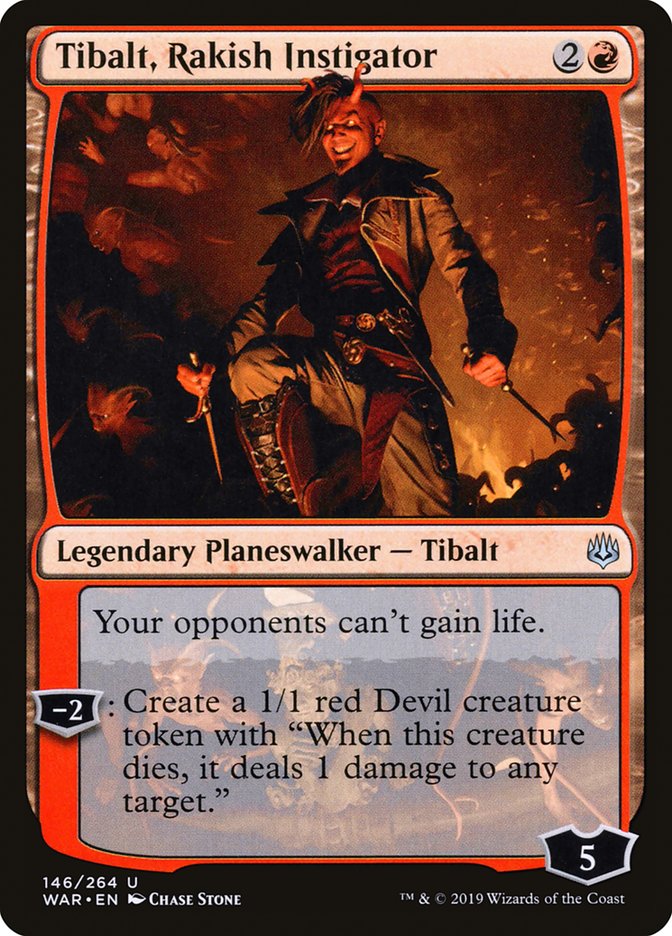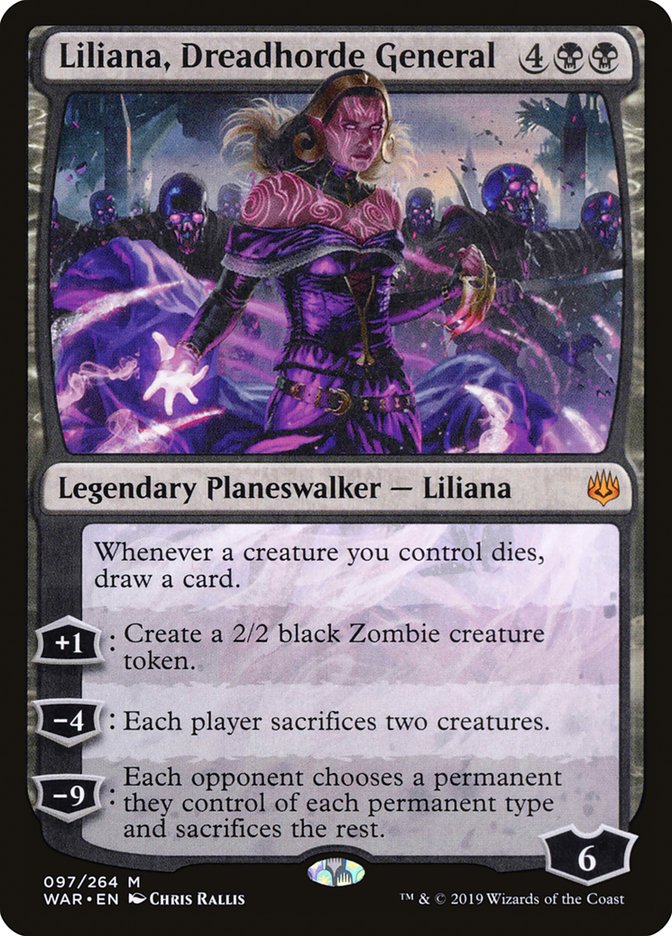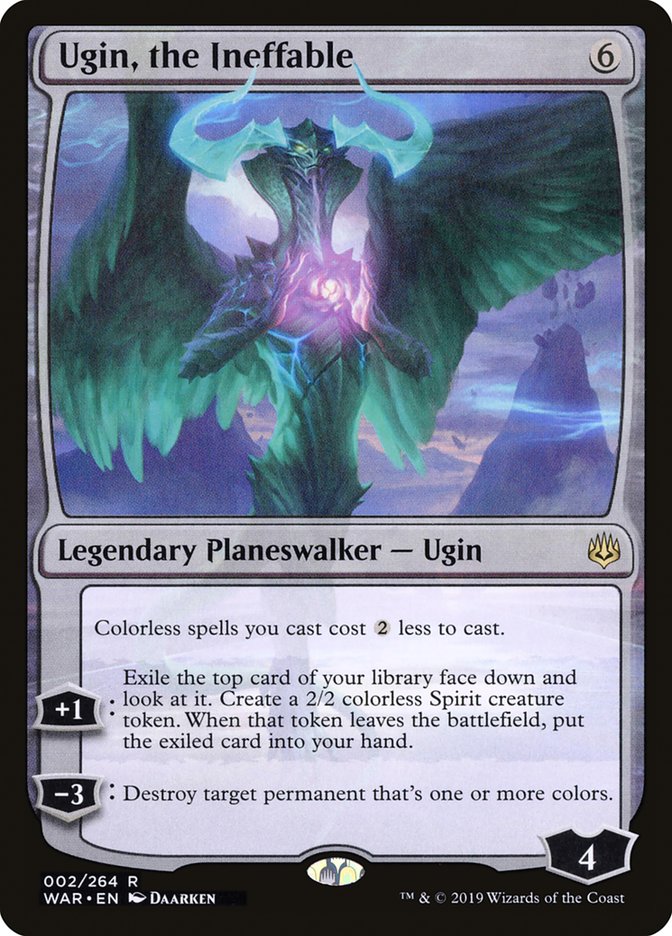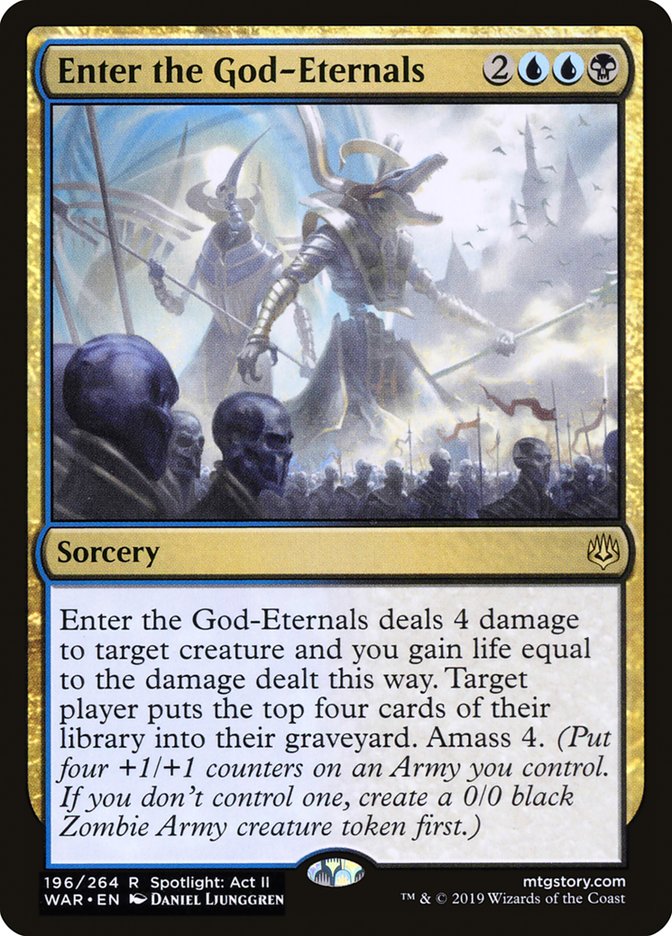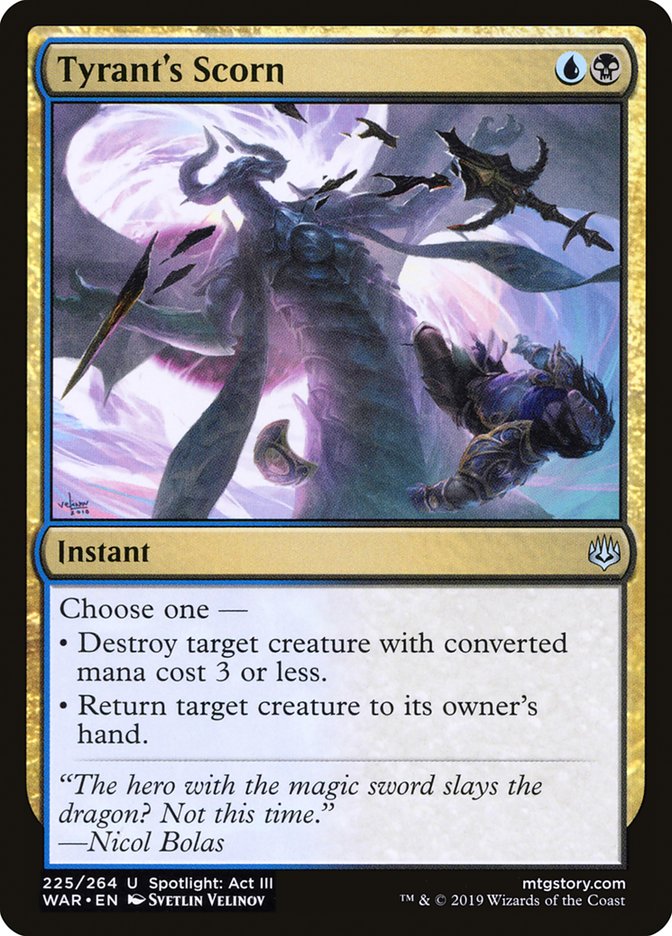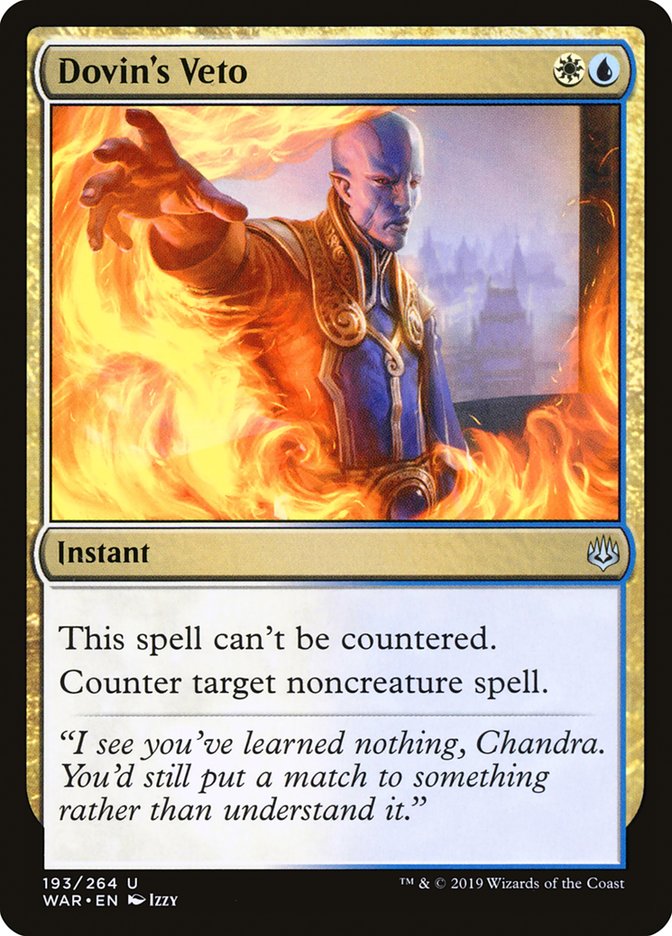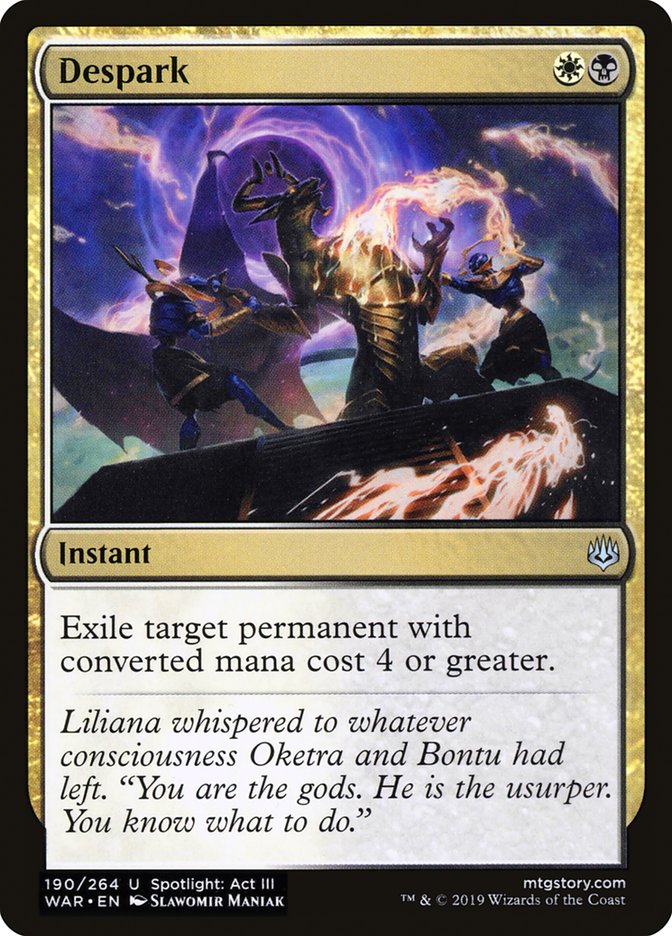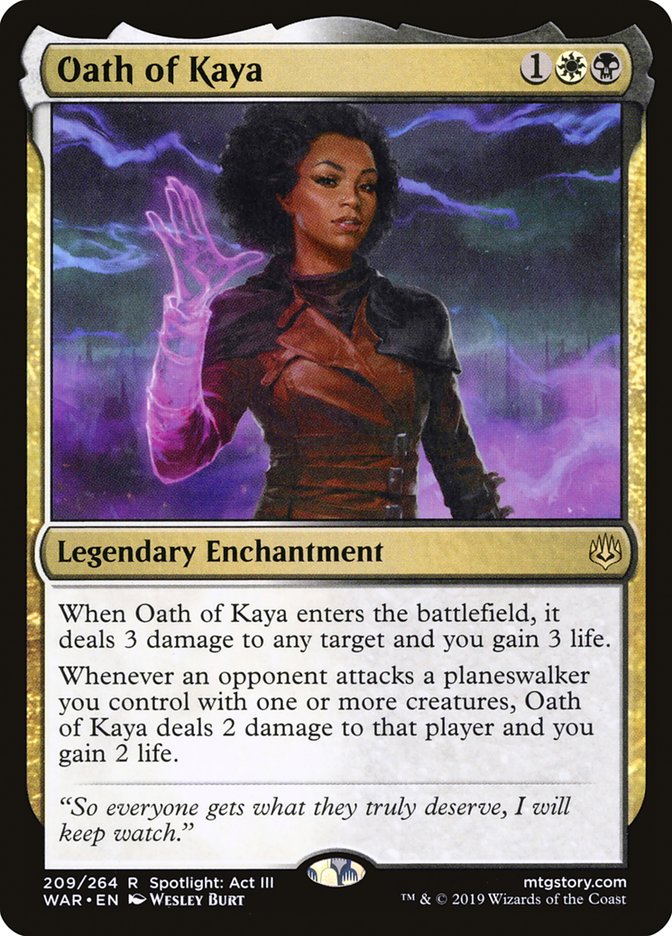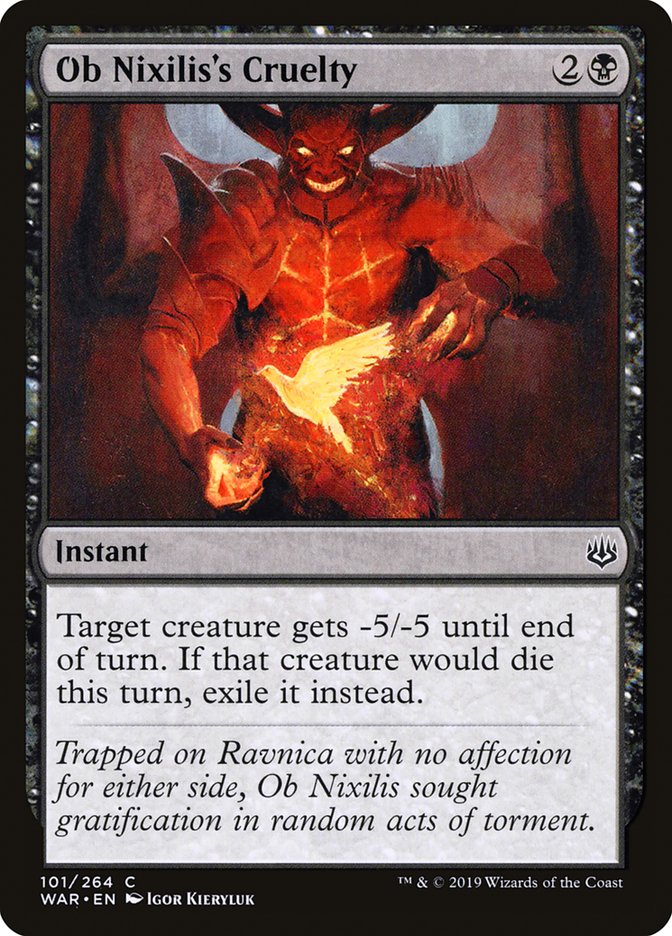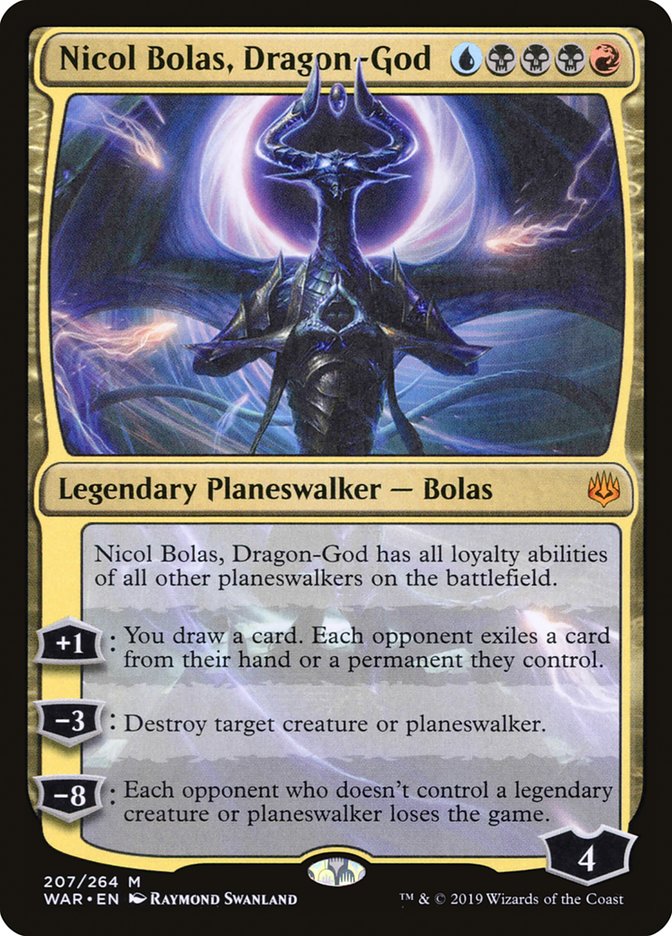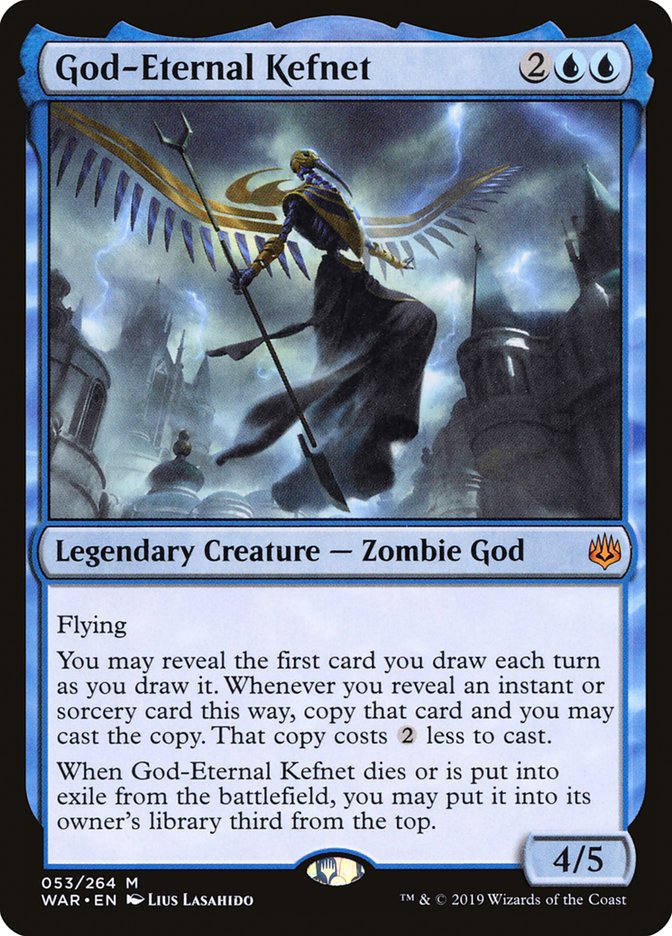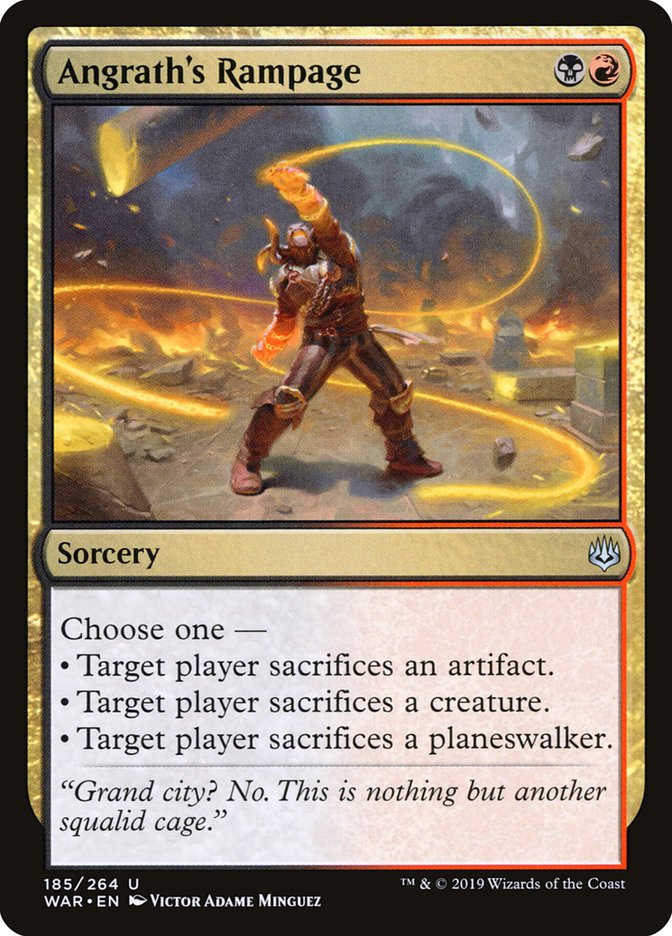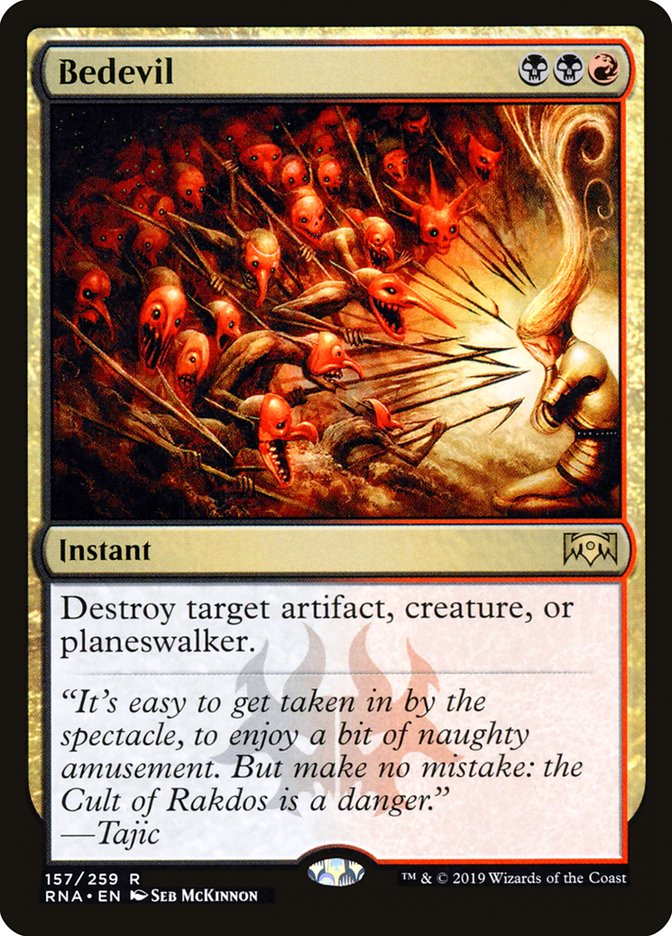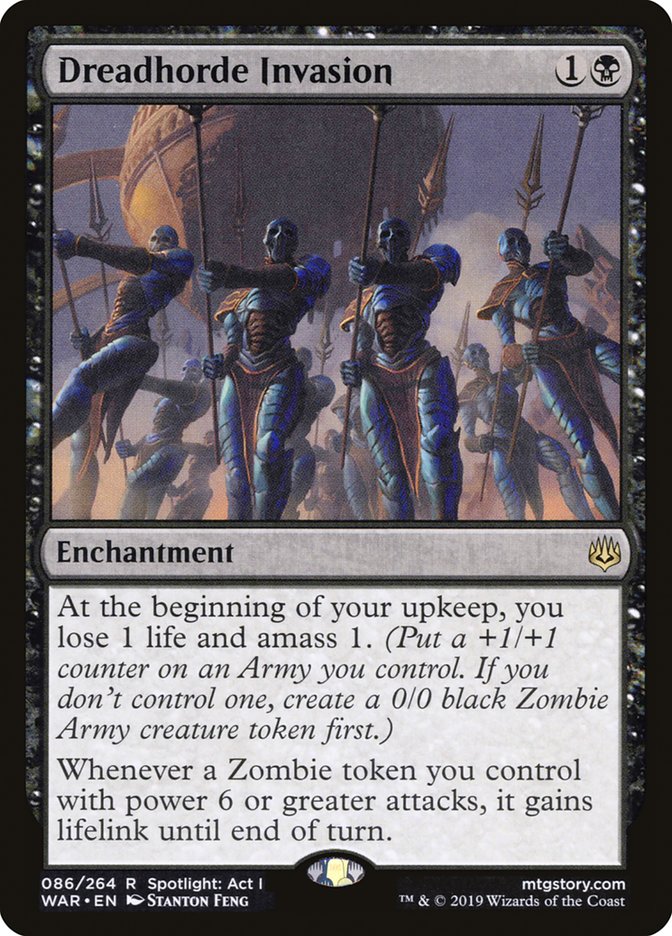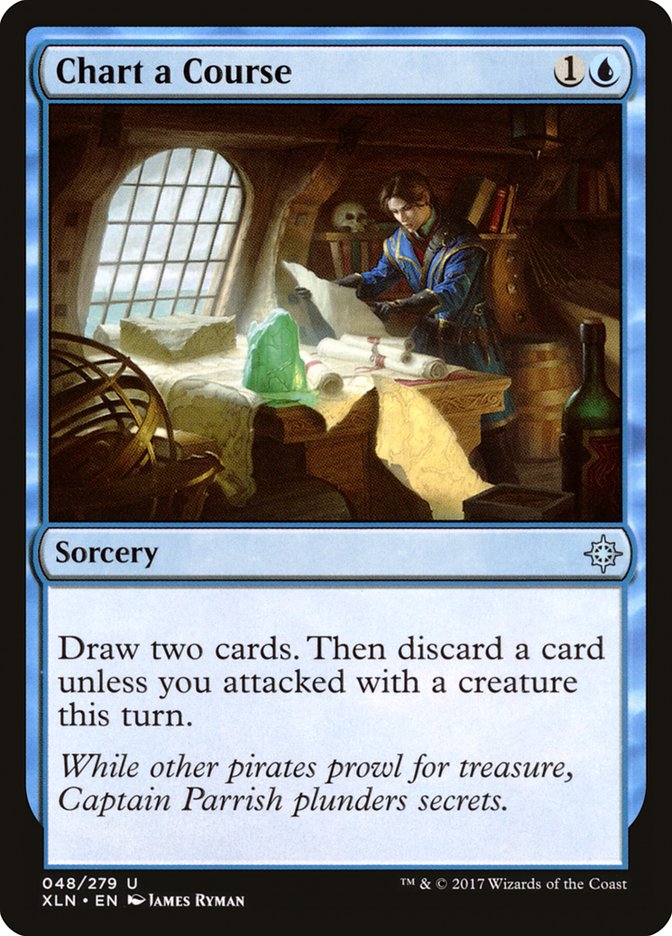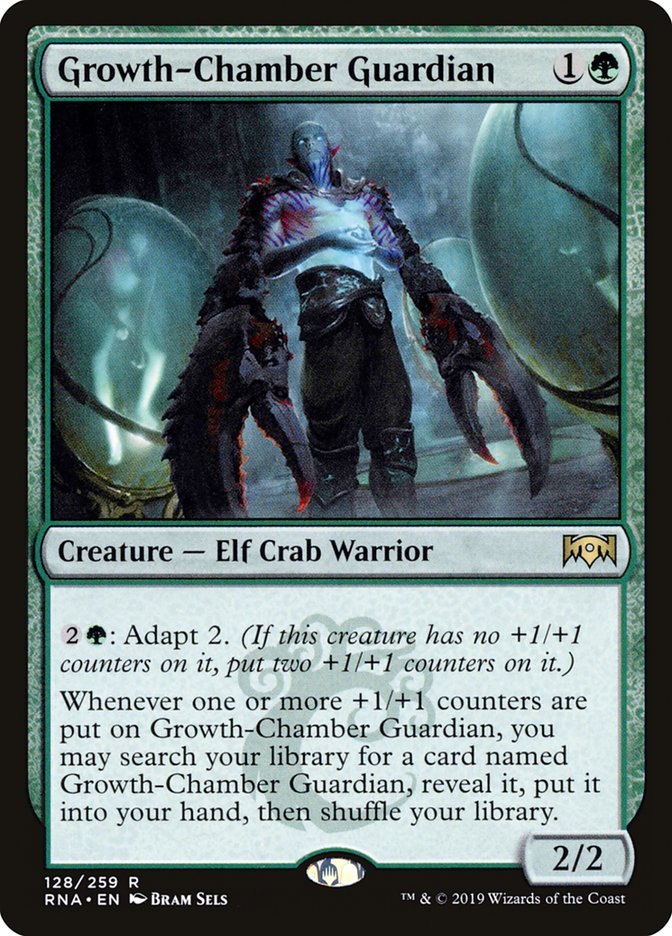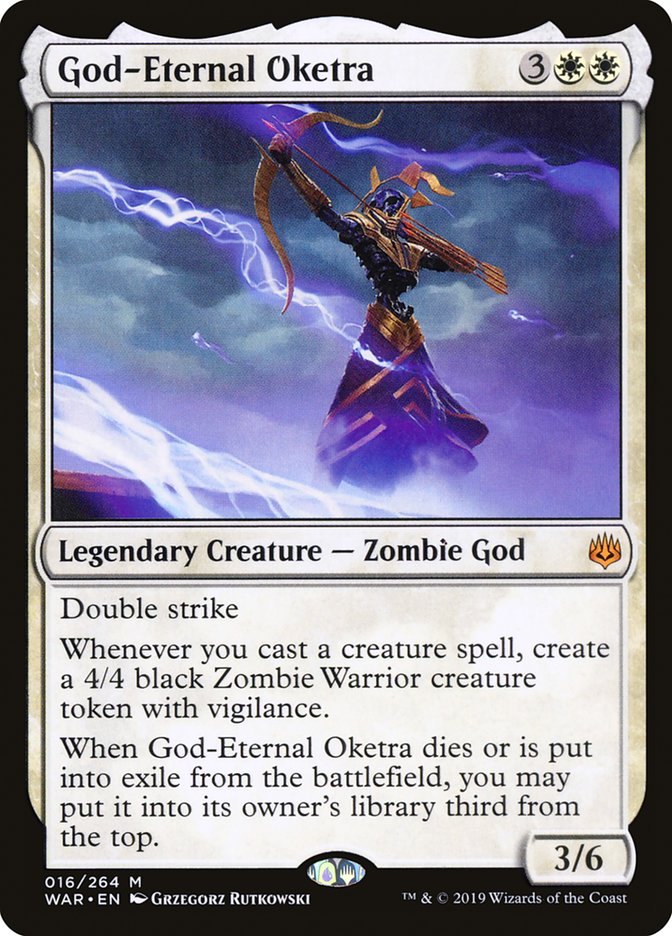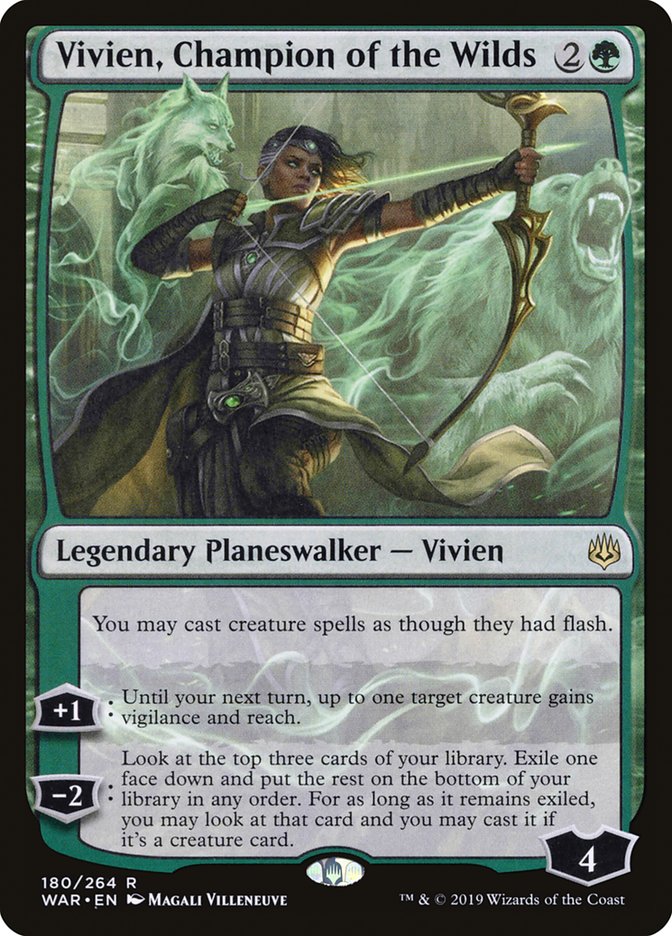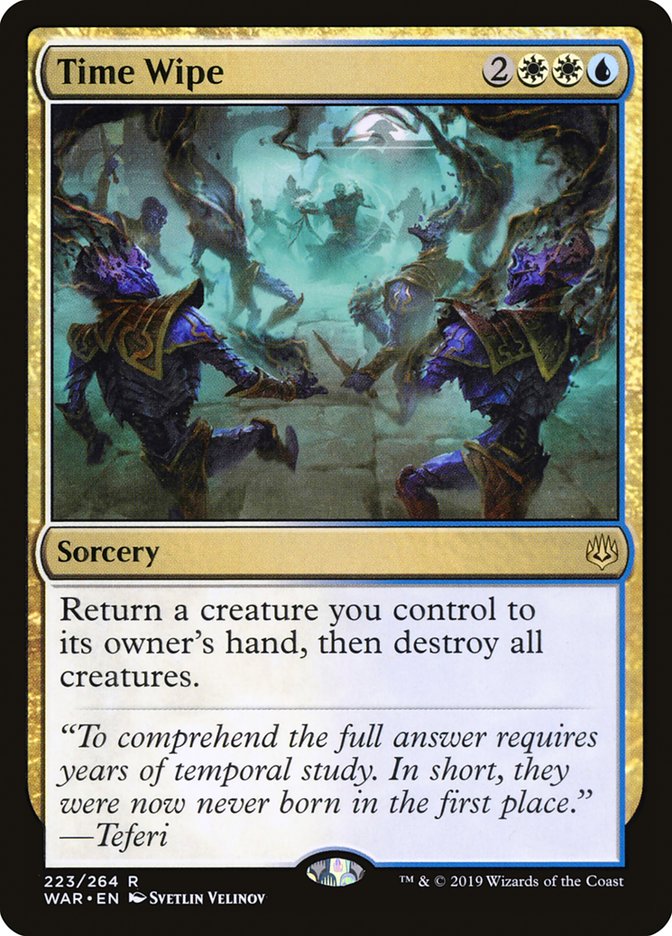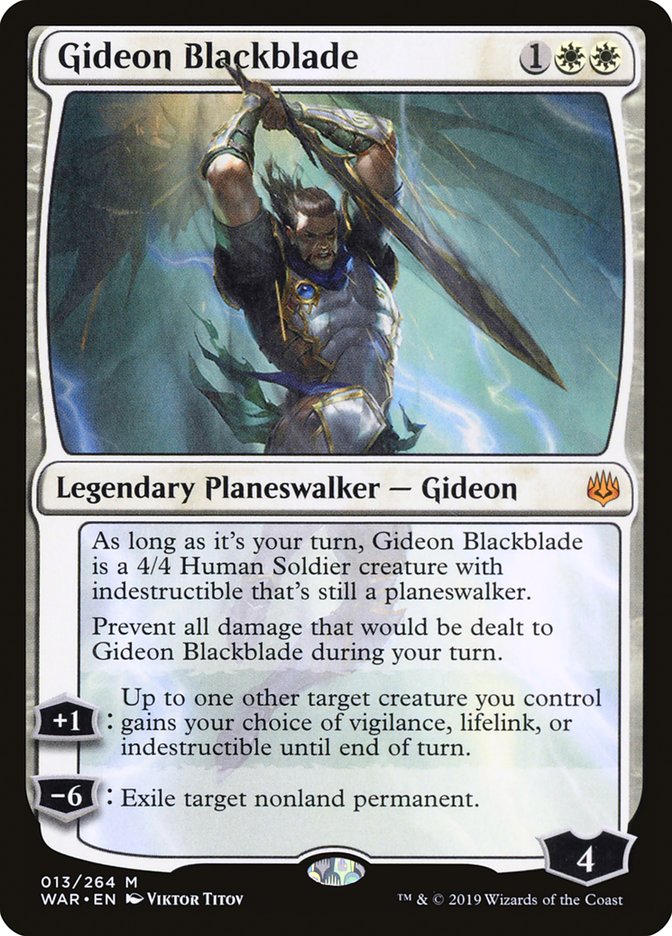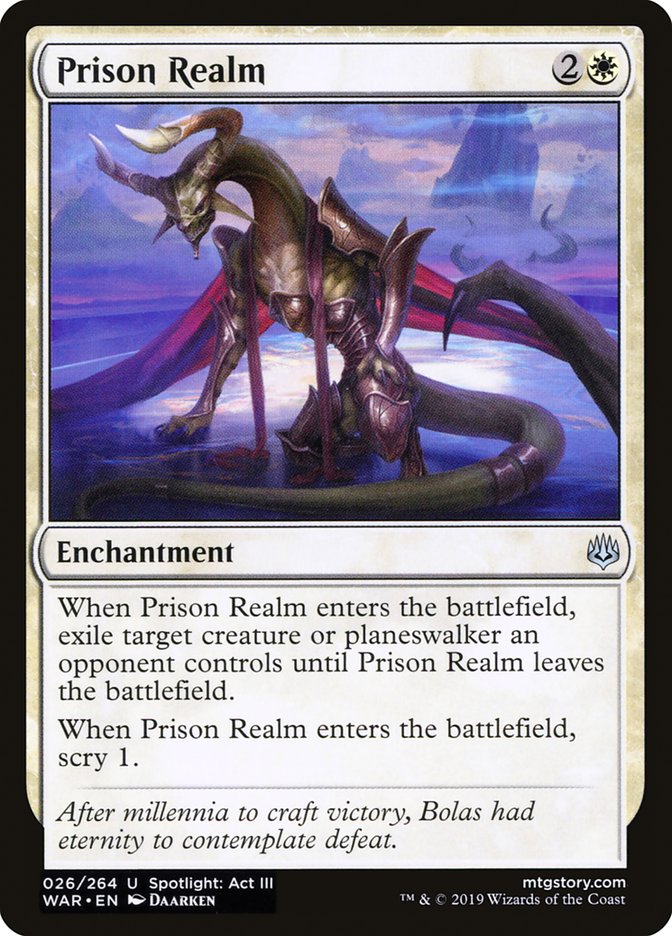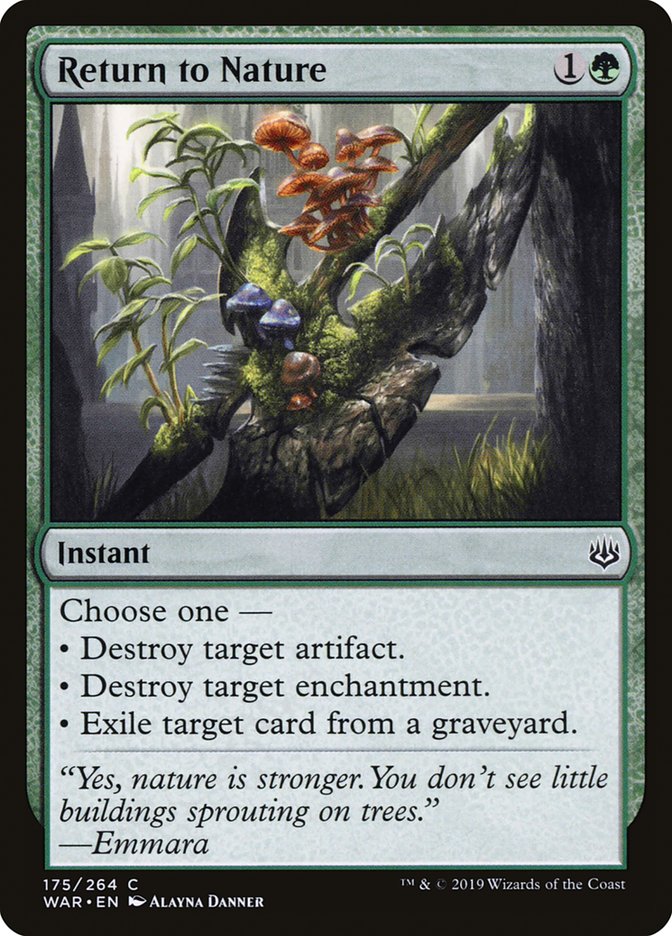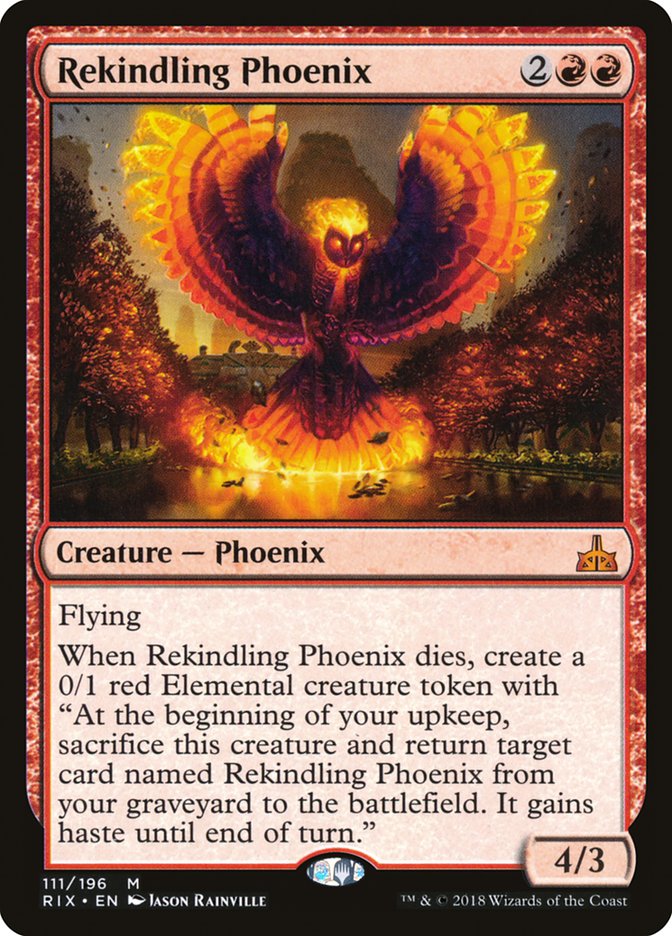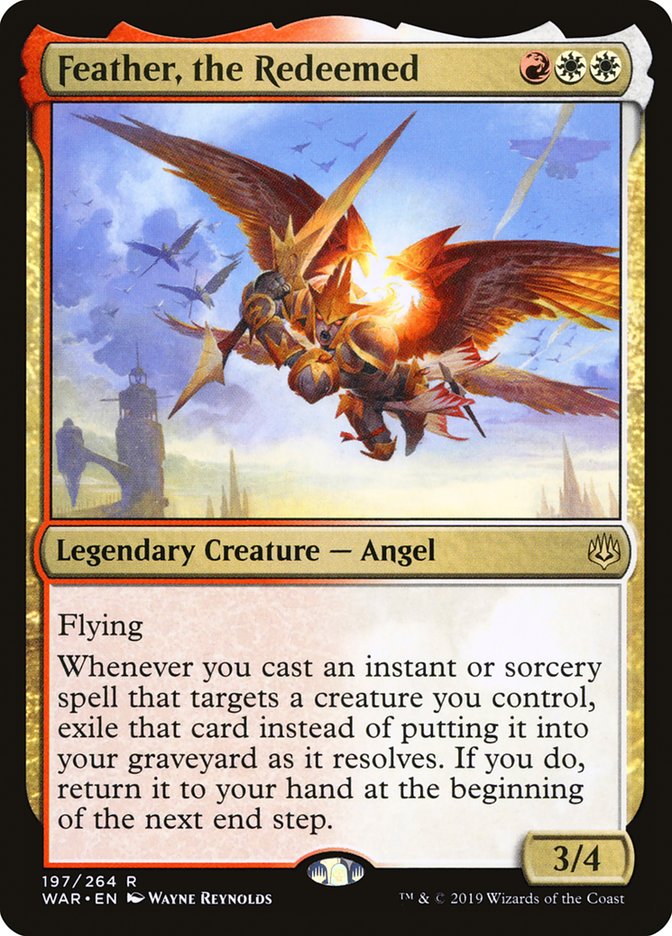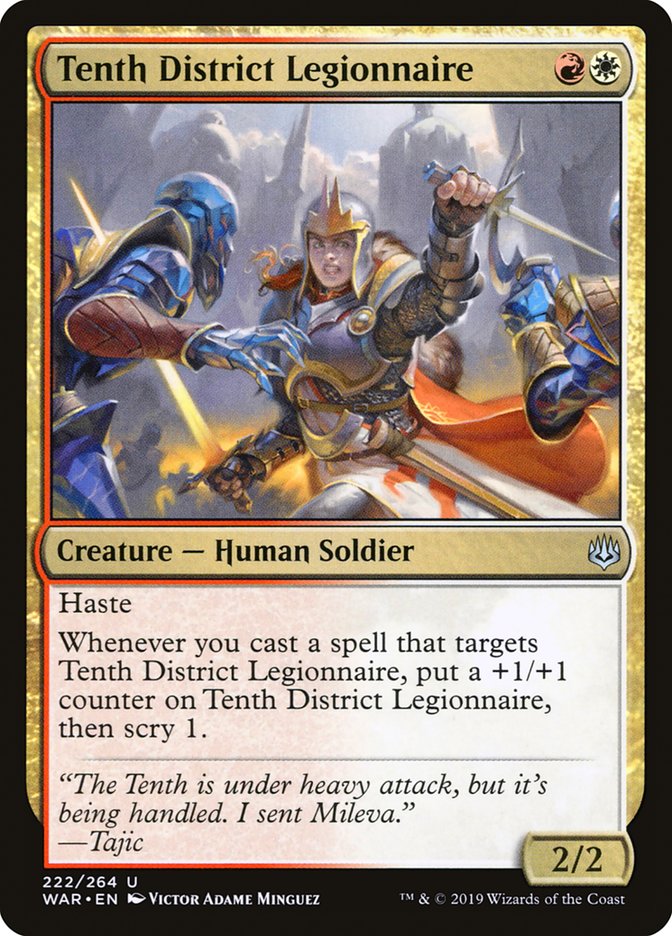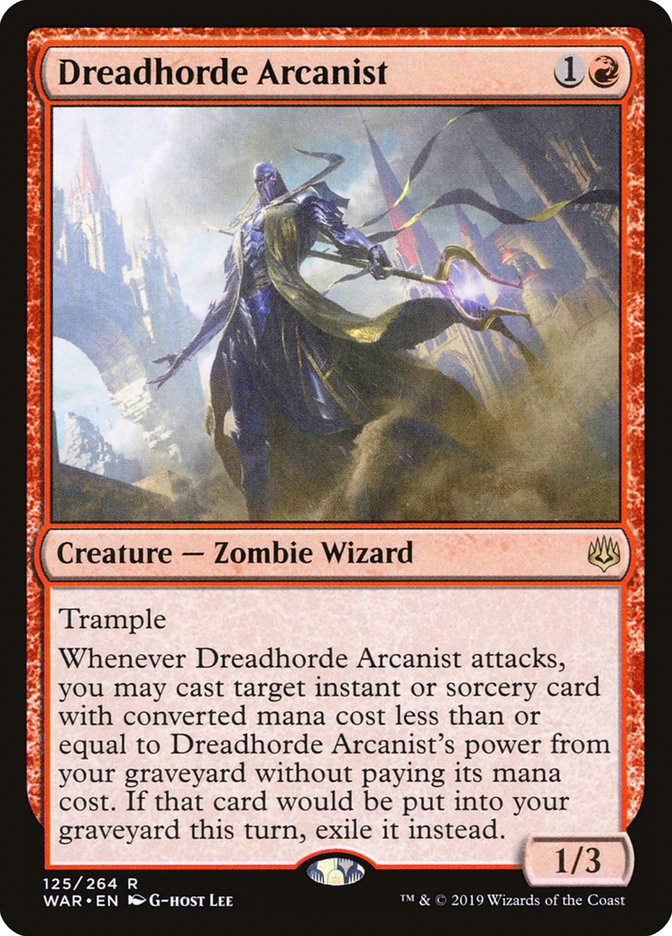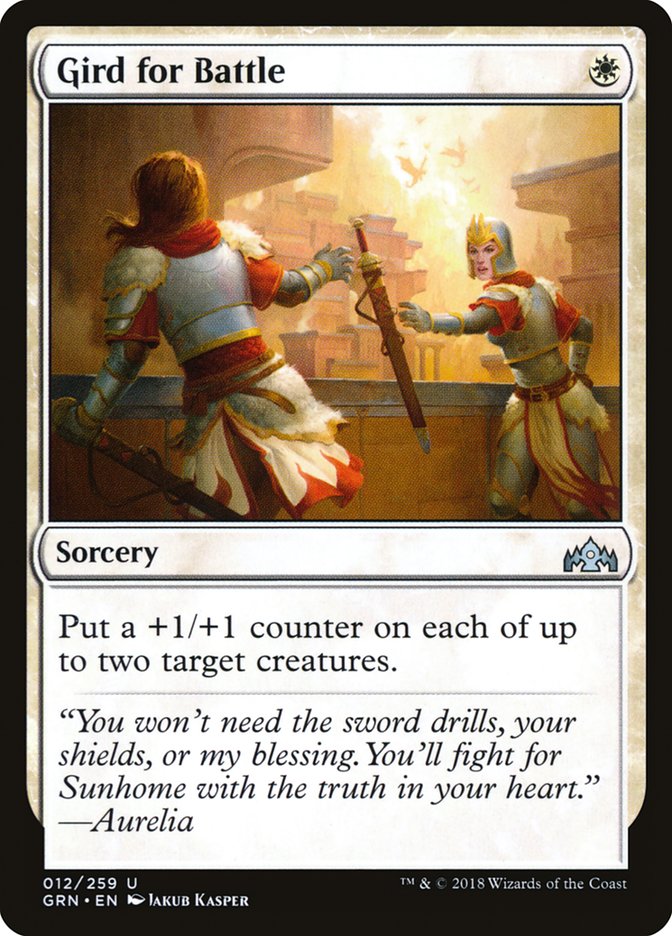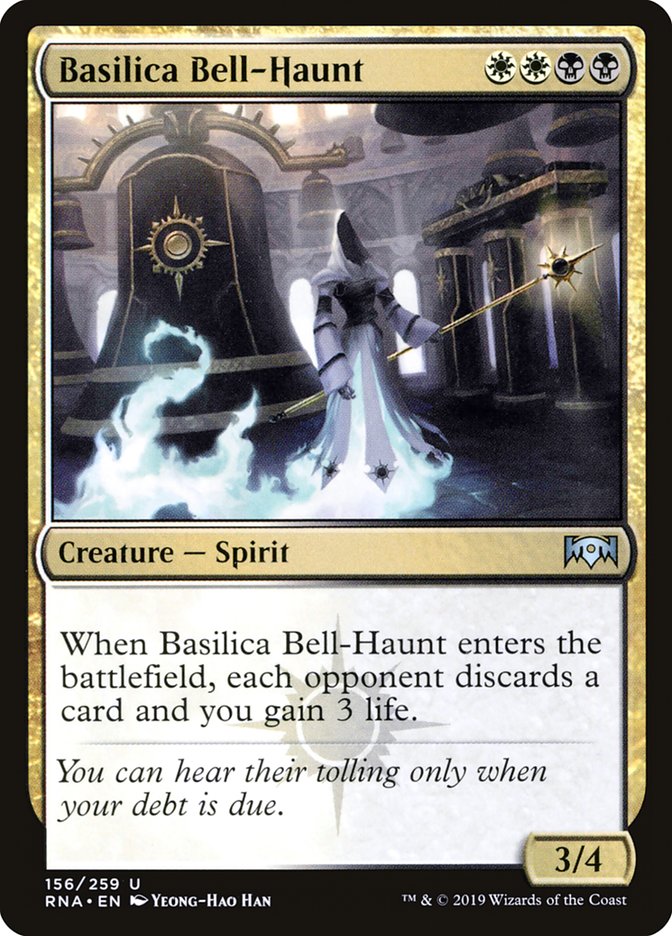War of the Spark is finally Standard-legal, and with the first major Standard event in the books, there’s a lot to learn, and a lot to reflect on.
For starters, the Top 8 looked quite a bit different from Day 2. Sure, Mono-Red Aggro and Esper Control were the second- and third-most-popular decks, but the rest of the Top 8 consisted of extremely under-the-radar decks. And what happened to Nexus of Fate?
|
Archetypes |
Day 2 Metagame |
|
Simic Nexus |
22.4% |
|
Mono-Red Aggro |
16.4% |
|
Esper Control |
13.8% |
|
Esper Midrange |
11.2% |
|
Azorius Aggro |
5.2% |
|
Gruul Aggro |
5.2% |
|
Sultai Midrange |
5.2% |
|
Bant Midrange |
3.4% |
|
Feather |
3.4% |
|
Various Control |
3.4% |
|
Orzhov Aggro |
2.6% |
|
Miscellaneous |
7.8% |
Nexus of Fate decks skyrocketed in popularity, thanks to an incredible abundance of new and attractive options. For instance, consider ninth-place finisher Tony Norton’s list:
Planeswalkers (4)
Lands (13)
Spells (43)

For starters, it’s hard to believe they could have printed as good of a planeswalker for Nexus decks as Tamiyo, Collector of Tales.
Tamiyo, Collector of Tales is an amazing addition to Nexus of Fate decks. Yeah, they’re always glutted on fours, but she is just incredible for them. For starters, she digs to Nexus of Fates extremely quickly. Not only does she look at tons of cards each turn, she is milling the rest of your deck rapidly. Each Chemister’s Insight you flip is an extra card for you, and the smaller your library gets, the more densely it will be packed with Nexus of Fates.
Her -3 is no joke, either.
Need to buy yourself some time? Root Snare is a helluva card to get back with Tamiyo! She’s not the only planeswalker we’re picking up in War of the Spark, however.
Narset just seems excellent to me. Already, she has made waves as a potent sideboard threat against control and Nexus; however, I’m not sure we can’t maindeck her. You get a card (with selection) on the way in, and then if they kill her with a spell, you’ve gotten a two-for-one, and if she lives, you’ll have gotten at least a two-for-one (to say nothing of how disruptive her ability may be). Remember, the disruption has a lot more applications than just messing up Chemister’s Insights and the like.
For instance, with Narset on the battlefield, Risk Factor is a non-issue. Just choose not to take four and Narset will make sure they don’t draw any additional cards. (!)
Narset’s Reversal is solid anti-countermagic countermagic. If someone tries to counter your Nexus of Fate, you can Reversal it in response (even if they had used a Dovin’s Veto). Now, not only do you get an extra turn, you put Nexus of Fate back into your hand, letting you take another turn after that.
Blast Zone is expensive enough to use that it’s hardly revolutionary; however, it is much appreciated in a deck with so little natural interaction. Besides, the opportunity cost is actually quite low, since we get to use it as an untapped land for a while. The main issue for previously existing lists would have been how poorly it plays with Frilled Mystic, but with Tamiyo taking over Frilled Mystic’s spot, that’s not really an issue anymore.
Okay, this one is a little tougher for me to buy. I get that it is sort of a mini-Man-o’-War, but is that really what we’re looking for? Would Augur of Bolas not be better?
I really struggle to see where Arboreal Grazer is worth a sideboard slot. I guess the theory might be that against red or white aggro you could want an early blocker, and the acceleration is helpful for getting the ball rolling. I dunno. I’m skeptical.
Despite being the most popular Day 2 archetype (22.4%), Nexus of Fate decks failed to put anyone in the Top 8. What happened?
Okay, admittedly, there were four in the Top 16, so maybe there was some variance involved, but still, why did Nexus underperform at the end?
If there’s one thing you can count on, it’s Mono-Red doing well Week 1 on the SCG Tour. You would think people would come extra pre-sideboarded with lifegain and cheap defense at this point. Regardless, Mono-Red is not the matchup Nexus of Fate decks are looking for. They are just too fast, and their burn frustratingly sidesteps Root Snare.
I mean, she’s fine, but is that really the right way? She costs the same as Experimental Frenzy, but I like Frenzy better. As things played out, two of the three Mono-Red decks in the Top 8 used Experimental Frenzy; however, it was Will Pulliam who took home the trophy, rocking the new Chandra.
Creatures (20)
- 4 Fanatical Firebrand
- 4 Ghitu Lavarunner
- 4 Goblin Chainwhirler
- 4 Viashino Pyromancer
- 4 Runaway Steam-Kin
Planeswalkers (4)
Spells (36)

The other new card here is Tibalt, Rakish Instigator:
Tibalt is not some crazy new addition that changes everything. It’s just a solid role-player against lifegain. The tools were already there, and this weekend, red showed up in a big way, bringing Tibalt along for the ride.
Ethan Gaieski’s list featured maindeck Frenzies, though he did have one Chandra in the sideboard to go along with the Risk Factors:
Creatures (20)
Spells (40)

Collins Mullen’s list was more Risk Factor-centric main, with Experimental Frenzy in the sideboard (sans Chandra).
Creatures (20)
Spells (40)

While it was definitely a good weekend for red mages, Esper Control had some mighty fine showings too.
Planeswalkers (7)
Lands (25)
Spells (28)

In addition to picking up some sweet, sweet Narset action, Allen utilizes a single copy of Liliana, Dreadhorde General as an alternate win condition (since sometimes stuff happens to Teferi).
Liliana, Dreadhorde General is a solid top-end finisher, especially well-suited to going over the top of midrange decks playing out threes, fours, and fives. The -4 ability is a potent sweeper, killing two creatures (including, potentially, Carnage Tyrant), while leaving us with a very powerful threat.
It’s a little weird how similar Ugin and Liliana are, but they each have pros and cons, and I like seeing a mix here between maindeck and sideboard. Ugin may not have as powerful of an ability to stabilize the battlefield for us, but he does give us a great deal of flexibility, particularly in sideboard games, where opponents are likely to have a variety of one-off threats.
When sideboarded, it’s safe to assume we’ll be especially interested in the passive for locking out opposing counterspells. However, Teferi is also quite maindeckable. It’s a versatile option for early interaction (using the minus to bounce an opposing threat and draw a card). Then, as the game continues, you can get a little bit more safety with end-step draw spells, thanks to Teferi’s passive. What’s more, the +1 ability means Kaya’s Wrath can be cast during your opponent’s attack step (such as against a red deck with a lot of haste).
Enter the God-Eternals is sort of a Dimir Loxodon Hierarch / Flametongue Kavu. It’s great in some spots, medium in others, but it does have some nice synergies (getting hit by Augur of Bolas and Kefnet, flipping your Chemister’s Insight) and it can be used tactically to remove opposing God-Eternals, or just in conjunction with Teferi, Hero of Dominaria. Here, we see it playing merely a sideboard role, but in Dimir and Grixis, we’ll likely see more of it.
Tyrant’s Scorn is at least comparable to Cast Down, but diversifying has some nice advantages. First, Tyrant’s Scorn can hit legends, of course. What’s more, drawing multiple removal spells in matchups without small creatures can really leave you without action, but Tyrant’s Scorn can at least be cycled on your Augur of Bolas.
Sure. I mean, it’s mostly Negate, but why not?
I’m not totally sure how to feel about Despark, but I guess I could buy it. The thing is, I really don’t want to be stuck with a Despark in my hand when my opponent has Narset, Parter of Veils or Teferi, Time Raveler. Even when I can line it up against the right kinds of threats, most of the threats that cost four or more do something on the way in, so it’s not like I’m even getting the best of it.
Love it.
Oath of Kaya is a potent anti-red option that neutralizes a threat while giving us more breathing room against the endless swath of burn spells. What’s more, the “protection” it affords our ‘walkers is not trivial.
In fact, fellow Top 8 competitor Edgar Magalhaes actually made room for two copies maindeck:
Planeswalkers (6)
Lands (25)
Spells (29)

I’m not sure I buy three Time Ravelers and zero Narsets, but I’ll give it a shot.
Ob Nixilis’s Cruelty is an interesting removal option out of the sideboard, being easy on the mana and capable of exiling Rekindling Phoenix. It’s nothing really special compared to so many other options, but if you specifically want edge against the Phoenix, it’s a fine option. Generally, I’m a little more drawn to Enter the God-Eternals for such matchups.
Of course, there is another five-drop on the tip of everyone’s tongue…
What happened to Nicol Bolas, Dragon-God this weekend?
I know GerryT has expressed reservations around serving our one true master, but I’ve been pretty happy with the card, even compared to such nice things as Teferi. The real question is whether you can support the manabase he demands (and are willing to give up most of the permission decks like Esper get to use).
Creatures (8)
Planeswalkers (6)
Lands (26)
Spells (20)

With a Thief of Sanity playset to go along with the full eight-pack of Nicol Bolas, Kanner is clearly someone who means business!
As for Nicol Bolas, the Ravager? I’m less sure on this one, but there’s a good case to be made. Kefnet is incredible, but the metagame has adjusted, and besides, Kefnet is kind of hard to play if you want to play this many other threats.
Of course, one of the other big advantages Kefnet has going for it is not needing red mana. It’s not like we actually need Angrath’s Rampage or Bedevil.
If we’re okay with giving up all the Bolas action, it’s not like it’s really that hard to get away from red.
I dunno. Maybe I’m just missing it, but I still think Dreadhorde Invasion is a little overrated (at least in control). This is pretty freaking far from Bitterblossom. I mean, I get it, it could be a solid tool against someone with a lot of removal while also being a solid perpetual blocker. I just think the life loss is really going to add up, and the advantage generated from amassing one every turn is going to fall apart more often than people might expect.
Admittedly, if you can pair Dreadhorde Invasion with Chart a Course, I would pick up the phone and at least consider what you’re pitching.
Despite just four pilots in Day 2, Bant Midrange put two in the Top 8, which kind of loudly suggests this is a major archetype on the rise. Harlan Firer and Rudy Briksza ran similar lists that served them well:
Creatures (29)
- 4 Llanowar Elves
- 2 Shalai, Voice of Plenty
- 2 Knight of Autumn
- 2 Deputy of Detention
- 4 Hydroid Krasis
- 4 Growth-Chamber Guardian
- 4 Frilled Mystic
- 4 Incubation Druid
- 3 God-Eternal Oketra
Planeswalkers (7)
Lands (21)
Spells (3)
- 3 Forest

Creatures (29)
- 4 Llanowar Elves
- 2 Shalai, Voice of Plenty
- 2 Knight of Autumn
- 2 Deputy of Detention
- 4 Hydroid Krasis
- 4 Growth-Chamber Guardian
- 4 Frilled Mystic
- 4 Incubation Druid
- 3 God-Eternal Oketra
Planeswalkers (7)
Lands (21)

For starters, this new Bant Midrange deck is a completely different animal from previous decks of these same colors, thanks to the incredible end-game made possible by God-Eternal Oketra.
God-Eternal Oketra is a must-kill threat,that is basically impossible to kill. In reality, it needs to be raced or countered, as the sea of 4/4 vigilance tokens it makes will completely dominate most battlefields.
Vivien is not only a powerful way to dig to Oketra, she also lets you cast Oketra with flash, meaning you can untap and follow her up with multiple creatures, generating an absolutely massive battlefield position before your opponent can even respond.
Time Wipe is cute, giving us coverage against green and white creature decks while also saving whatever our best creature is. It’s not the biggest deal or anything, but it is a solid upgrade over previous options.
With Narset, Teferi, Saheeli, Tibalt, and Vivien all showing up, there’s no question three-cost ‘walkers made a big splash. However, there’s one more three-cost ‘walker to crack the top tables.
Gideon Blackblade is an excellent new aggressive planeswalker, especially ideal for diversifying angles of attack, reducing vulnerability to sweepers (a detailed analysis of the card can be found here). This weekend, he helped propel Zachary Kiihne to a Top 8 finish with his update to Selesyna Tokens:
Creatures (13)
Planeswalkers (3)
Lands (8)
Spells (36)

Other than trimming a few cards for Gideons, there’s not too much to touch on here other than a few minor tweaks to sideboard spots, thanks to new options from War of the Spark.
Prison Realm is an Oblivion Ring that can only hit creatures and planeswalkers but brings with it a scry 1. While generally a little lower in power level than Oblivion Ring due to the loss of flexibility, it has the advantage of being Standard-legal.
Strictly better Naturalize, Return to Nature has the added upside of giving us access to a little incidental graveyard hate in a pinch.
The weird part, however, is the interaction with God-Eternals, like Kefnet and Oketra. If one of the God-Eternals dies, one might try to exile it with Return to Nature with the trigger on the stack; however, that doesn’t get you anywhere, since the God-Eternals also just work from exile.
If you’re in the market for Gideon decks, there was at least one other family of decks packing him I would consider.
While Boros and Naya Feather decks were more common, another variant splashing blue for Dive Down raised a few eyebrows.
Creatures (16)
Planeswalkers (3)
Lands (22)
Spells (19)

While this deck is excellent when it has Feather going, thanks to so many cheap and powerful cards to loop, it also makes great use of Tenth District Legionnaire and Dreadhorde Arcanist. These cards go a long way towards making the strategy hum, even without Feather.
Tenth District Legionnaire clearly hits hard and fast, and then quickly grows for continued legitimacy. Dreadhorde Arcanist may be a little more surprising, but is yet another powerful way to capitalize on the plethora of one-cost sorceries and instants in Feather decks. Not only does it draw a card each turn, it saves you a mana, making it great for snowballing early advantages.
Okay, that’s pretty committed. Gird for Battle is pretty mana-efficient, great to loop with Feather, and excellent for getting a dominating battlefield on Turn 3, especially against opponents relying on small burn spells.
Well, as usual, red looks good Day 1. We’ve got to bring the average casting cost of our decks down a little, and maybe keep it a little more real with the lifegain. As much as I’m into Dimir and Grixis, I can’t help but wonder if this might be Orzhov’s chance to gain a little ground…


